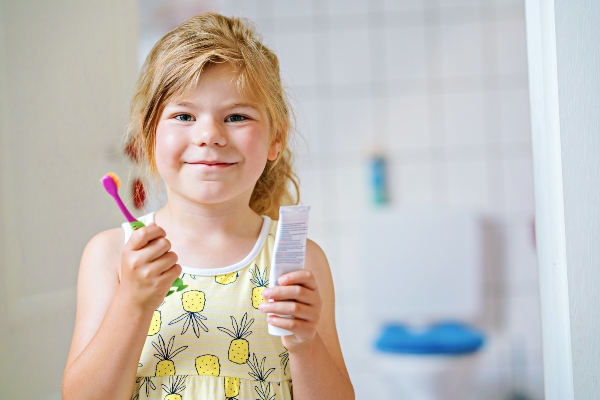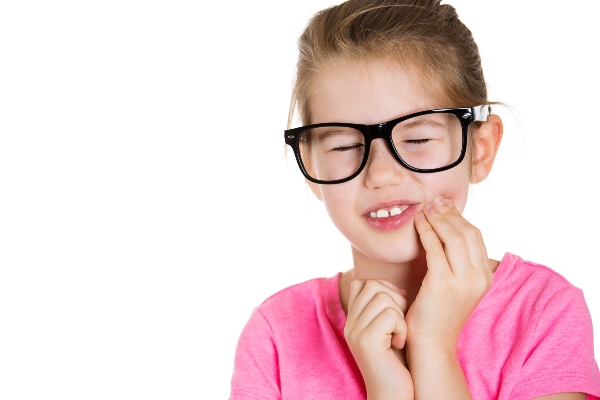Kid Friendly Dentist: Normal Tooth Eruption Patterns in Children [Quick Guide]

A frequent question parents of young infants ask their kid friendly dentist concerns the timing and pattern of the eruption of the primary teeth. Primary teeth, also known as baby teeth or milk teeth, typically erupt in a pattern even if the timing differs between patients. Since infants can show signs of teething long before the first tooth erupts, some parents become unnecessarily worried about a child’s progress.
What is the normal pattern of tooth eruption?
Typically, baby teeth erupt in a particular order and are then are lost in a certain order as the permanent teeth emerge. Variations in patterns and timing can occur, but when eruption has not taken place in some cases a visit to a kid friendly dentist might be necessary.
When to expect primary tooth eruption
On average, an infant’s first tooth can be expected to erupt around 6 months of age, but that is just a guideline and many children have teeth that erupt earlier. It is still considered on time as long as the first tooth has arrived by 12 months of age. Once the first tooth erupts, the matching tooth on the opposite side will usually follow soon after and this pattern will repeat until all 20 baby teeth have come in. The last baby teeth usually begin to emerge between 18 and 24 months of age.
Typical order of tooth eruption
Although the pattern can sometimes vary, most children experience the same order of tooth eruption. The front middle teeth are called the central incisors. Usually the bottom two central incisors are the first teeth to emerge, followed by the top central incisors. The teeth beside the central incisors, called the lateral incisors, emerge on top and on bottom. Next, the first molars arrive, leaving a gap for the canines to follow. Finally, the second molars will come in for a total of 20 primary teeth.
When to expect permanent tooth eruption
Like primary teeth, a child’s permanent or adult teeth usually follow an eruption pattern. Permanent teeth are more likely to experience variation from the typical pattern than primary teeth. Children usually experience their first lost tooth around five or six years of age beginning with the lower central incisors and continuing in a similar sequence as the primary tooth eruption. Permanent teeth usually push the primary teeth as they erupt, but sometimes children experience a permanent tooth that erupts behind or in front of a tooth that is not yet loose.
When to visit a kid friendly dentist
Most children experience primary and permanent tooth eruption without the need for dentist intervention, but if the first tooth has not come in by 18 months of age a consultation could be warranted. Similarly, if many permanent teeth have arrived without primary tooth loss a kid friendly dentist should evaluate to see if extractions are needed.
Conclusion
A similar timeline and pattern of primary tooth eruption occurs with most children. Knowing what to expect helps a parent know if a visit to the dentist for an assessment is recommended.
Request an appointment here: https://www.grandparkwaypediatricdental.com or call Grand Parkway Pediatric Dental at (832) 579-0960 for an appointment in our Richmond office.
Check out what others are saying about our services on Yelp: Read our Yelp reviews.
Recent Posts
Dental fillings for kids are crucial in preventing many dental issues. Baby teeth can develop cavities. Correcting this problem is important for developing permanent teeth. Here are the details on how preventive dentistry uses dental fillings for kids.Research shows that many school-age kids suffer from cavities. This disease is common even if it is preventable.…
Dental fillings for kids are one of the most common treatments for tooth decay in children. The earlier tooth decay is detected in a child’s tooth, the easier it is to treat. Let us examine why treating childhood tooth decay is crucial and how a pediatric dentist treats it.According to the Centers for Disease Control…
Dental fillings for kids can be nerve-wracking for some kids, likely due to the necessary tools. While we aim to make this simple process as smooth and painless as possible, we need your help. Getting a firm grasp on what your kids can expect during this procedure and how to prevent a future need for…
Getting dental fillings for kids can help improve your child’s dental health. It can restore the affected teeth and relieve your child’s pain. Understanding the process can help you prepare your child for the next appointment. Here are the details on what parents like you must know about dental fillings for kids.The dentist will discuss…


